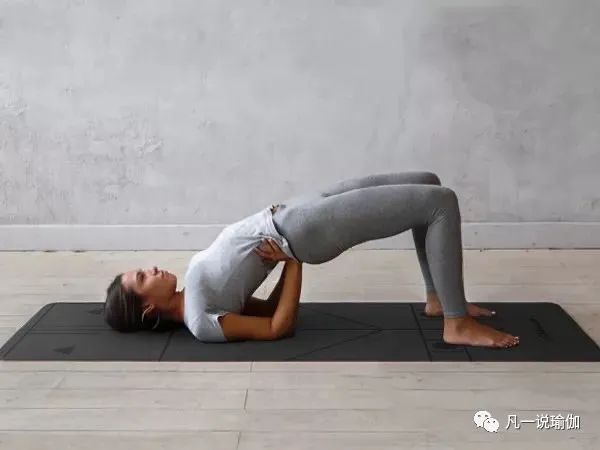Yoga bridge is also one of the basic asanas.

Its well-known effect is to practice hips, so it is also called hip bridge.

At the same time, the bridge is also a necessary action to unlock the wheel.

Two days ago, someone told us that his knee hurt when he was practicing bridge.
It seemed that he was a little out of touch.
But in fact, there are quite a lot of people who cause knee pain.
I have met several myself, and many people reflect this problem.
This article will talk to you about why your knee hurts when practicing bridge, and the solutions! Let’s first understand the bridge: practice method: lie on your back on the cushion, bend your knees, separate your feet the same width as your pelvis, face your knees and toes directly in front, put your hands on both sides of your body naturally, retract your chin slightly, and extend the back of your neck; When inhaling, lift your hips upward, keep breathing for 3 ~ 5 groups, and then restore.
Let’s see why the knee hurts in practice! 1.
The front of the thigh is tense and the knee joint is stressed.
Some people are used to pulling their heels close to their hips after bending their knees in preparation.
However, if the hip joint extension ability is not enough, after entering the pose, the hip can not be raised to the position where the lower leg comes to the vertical ground.
The knee exceeds the knee joint a lot.
In addition, the front side of the thigh is tight, the knee joint will be over stressed, resulting in knee pain.
Solution: move the sole of the foot forward and keep the heel away from the hip, which is equivalent to reducing the bending range of the knee, and naturally the requirements for the flexibility of the front thigh are weakened; Move the heel forward a little.
When the body enters the pose, the lower leg can be perpendicular to the ground, and the weight will be transferred from the knee joint to the sole of the foot, which is equivalent to that the knee joint will not and will no longer be stressed.
If the lower leg is vertical to the ground and the knee still hurts, it means that the front of your thigh is too tight.
You can go a little further.
Therefore, it is not necessary to pull the heel close to the hip when practicing within the scope of their ability.
When some people pull the heel backward in preparation, they already have a sense of tension in the front of their thighs, so they should pay more attention.
2.
Knee buckle.
We say that keeping the knees and toes in one direction can maximize the protection of the knee joint and avoid the torsion force on the knee joint.
The standard bridge in yoga requires the knees and toes to face straight ahead.
Not only in the preparation, but also in the process of lifting, maintaining and restoring, always keep the knees and toes in the same direction.
I’ve met her.
In fact, she pays great attention to details.
It’s right when preparing for the action.
When lifting, the knee will buckle inward, and then when holding, she will take the initiative to adjust the knee to the positive position, and the falling process is buckle inward.
In fact, she thought she was always in a position facing the front.
So I don’t understand why I’ve been careful to keep my knee in the right position.
It’s just that I lost control in the process of moving.
This should attract our attention, not only in the bridge, but also in other asanas.
Solution: you can tie an extension band to your thighs, or clip a yoga brick between your legs to help fix the orientation of your knees so that your knees are always in the same direction as your toes.
Another point is to pay attention to the foundation of the sole of the foot.
You will find that when the knee is buckled inside, the force of the sole of the foot is also biased towards the inner edge of the sole of the foot.
The foundation is very important at any time.
In addition, we say that the standard bridge in yoga is that the knees and toes face straight ahead, but in many variants, they do not have to face straight ahead.
For example, the soles of the feet can be rotated outward, but the knees also follow outward and always keep in the same direction as the toes.
In which direction is not the point, the point is not to let the knee bear the force of torsion.
The knee pain in the bridge is really too small to be small, but as long as it is related to the body, as long as there is pain, especially the relatively angry parts of the knee, lumbar spine and cervical spine should be paid attention to.
Pay attention to everything and share health and beauty!..

